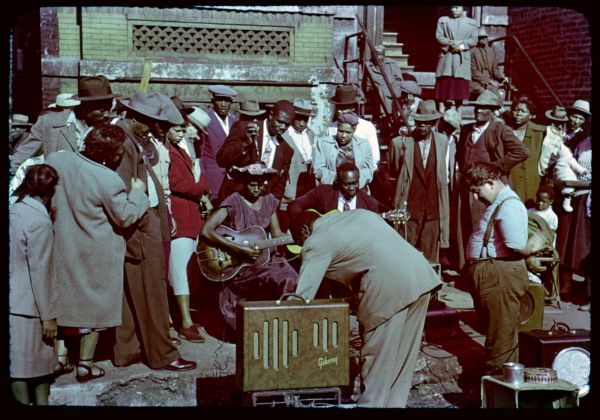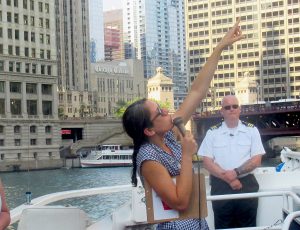Mark Twain was both a beloved American author and a dedicatedly curious world traveler. In 1892, during one of his overseas voyages, Twain wrote a very intriguing column for the Chicago Daily Tribune. It’s titled “the Chicago of Europe” and often republished as the “German Chicago.” Twain found Berlin to be the spitting image of Chicago in its form, design and energy. I asked our Executive Director, Amanda, if any European cities reminded her of Chicago. Her immediate answer: “Berlin!”
So now I had to know why. (This investigation, by the way, seems ripe for investigation in an originally-produced documentary, if you ask me.)
We research stories from Chicago history, architecture and culture like this while developing our live virtual tours, in-person private tours, and custom content for corporate events. You can join us to experience Chicago’s stories in-person or online. We can also create custom tours and original content about this Chicago topic and countless others.

Twain’s “German Chicago” of the 1890s
“I feel lost in Berlin. It has no resemblance to the city I had supposed it was.”
Mark Twain begins his description of the “Chicago of Europe” with a feeling common to his era. Look back to the time of the Columbian Exposition and you’ll find lots of commentary about how overwhelming modern industrial cities were. Twain and his contemporaries were experiencing a population and building boom with no equal in human history to that date. I mean… just look at this population chart below.
Despite Malthusian predictions of nature’s fury, population growth also lead to a gigantic economic boom. The 1870s saw Berlin become the capital of a newly-unified German Empire and the Second Industrial Revolution kick into high gear. The population boom depicted above meant more folks were around inventing new technologies. These technologies led to new factories, creating a huge demand for laborers. Industrial laborers had higher incomes than their farming peers. Higher incomes increased demand for new products, which laborers produced in big new factories, and on and on.
The cycle of consumerism as we know it today was born in the epoch in which Twain lived and wrote. It is no surprise that this boom in population and wealth would have an impact on built environments, such as boomtown Berlin. Today, as industrialization moves overseas, Amanda noted that both Berlin and Chicago are united in their “rust belt” feel.
Why Are Berlin and Chicago So Similar?
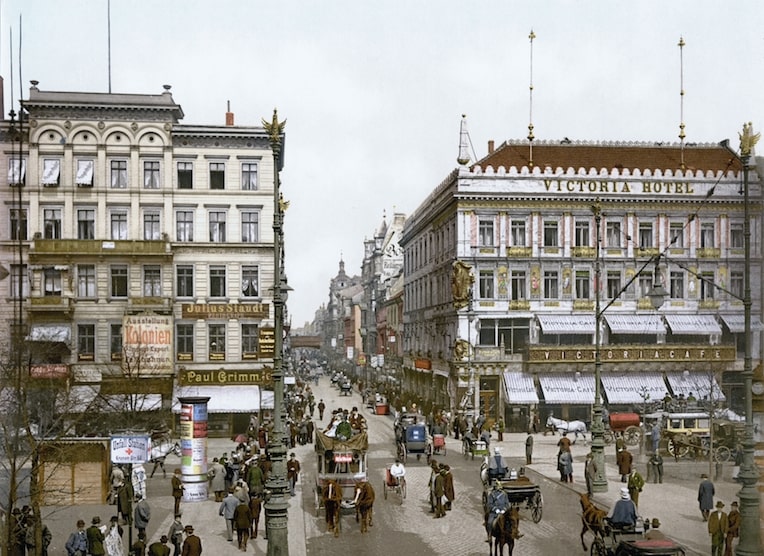
Mark Twain and Amanda hit on the same things when they described the “German Chicago” for me. The city looked new, the city felt spacious, the street grid was straight and rational, and the landscape is flat as a pancake. I find it fascinating that two travelers could notice the same things 125 years apart.
Let’s start with the feeling of newness. Berlin is a much older city than Chicago. The city is first mentioned in the historical records way back in the 12th century. Chicago’s settlement began in the 1780s, when Jean Baptiste Pointe DuSable built a cabin near the river’s mouth.
Despite their disparate origins, both cities grew at a breakneck pace during the 19th Century. Each city crested the 1,000,000 mark around the 1880s and the 2,000,000 mark around 1910. Both cities also spent those years gobbling up neighboring land via annexation, greatly increasing their size to match their burgeoning populations. All those people and all that new land meant both cities looked and felt like they’d sprung up out of nowhere.
According to Twain, “The main mass of the city looks as if it had been built last week, the rest of it has a just perceptibly graver tone, and looks as if it might be six or even eight months old.” He was writing about Berlin, but the description perfectly matches Chicago’s breakneck growth as well.
Rational City Planning for an Industrial Age
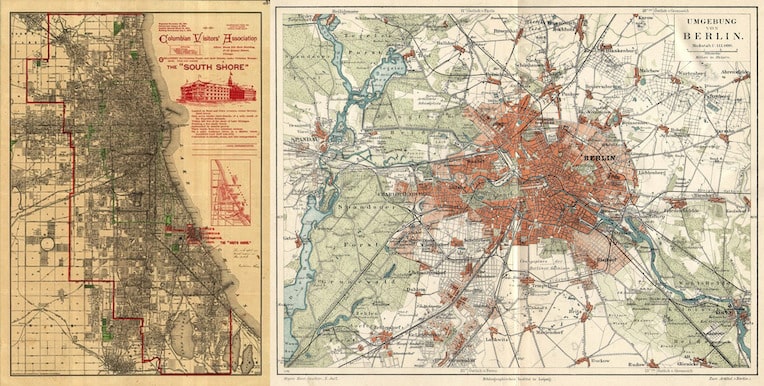
The spacious feel and straight-away streets of the “German Chicago” and American Chicago are two peas in an 18th-century pod. The Enlightenment saw a flowering of philosophy centered around rationality in all aspects of life. For urban design, that meant a “rational” street grid of straight broad avenues intersecting at right angles. Urban planners believed that this neat and orderly system would ease congestion, reduce waste, speed commerce and generally make life better for city-dwellers.
This new city model stood in stark contrast to the Byzantine meanderings of Medieval cities like Paris and London. No more webs of small alleys and cork-screwing side streets! Now everything would recall the ancient grid that Hippodamus of Miletus applied to the Port of Athens in the 5th Century BCE. That connection to Ancient Greece, by the way, is likely what cinched this grid for both the German Chicago and its American cousin. The 19th Century was the high point of the Greek Revival in architecture, planning, and philosophy.
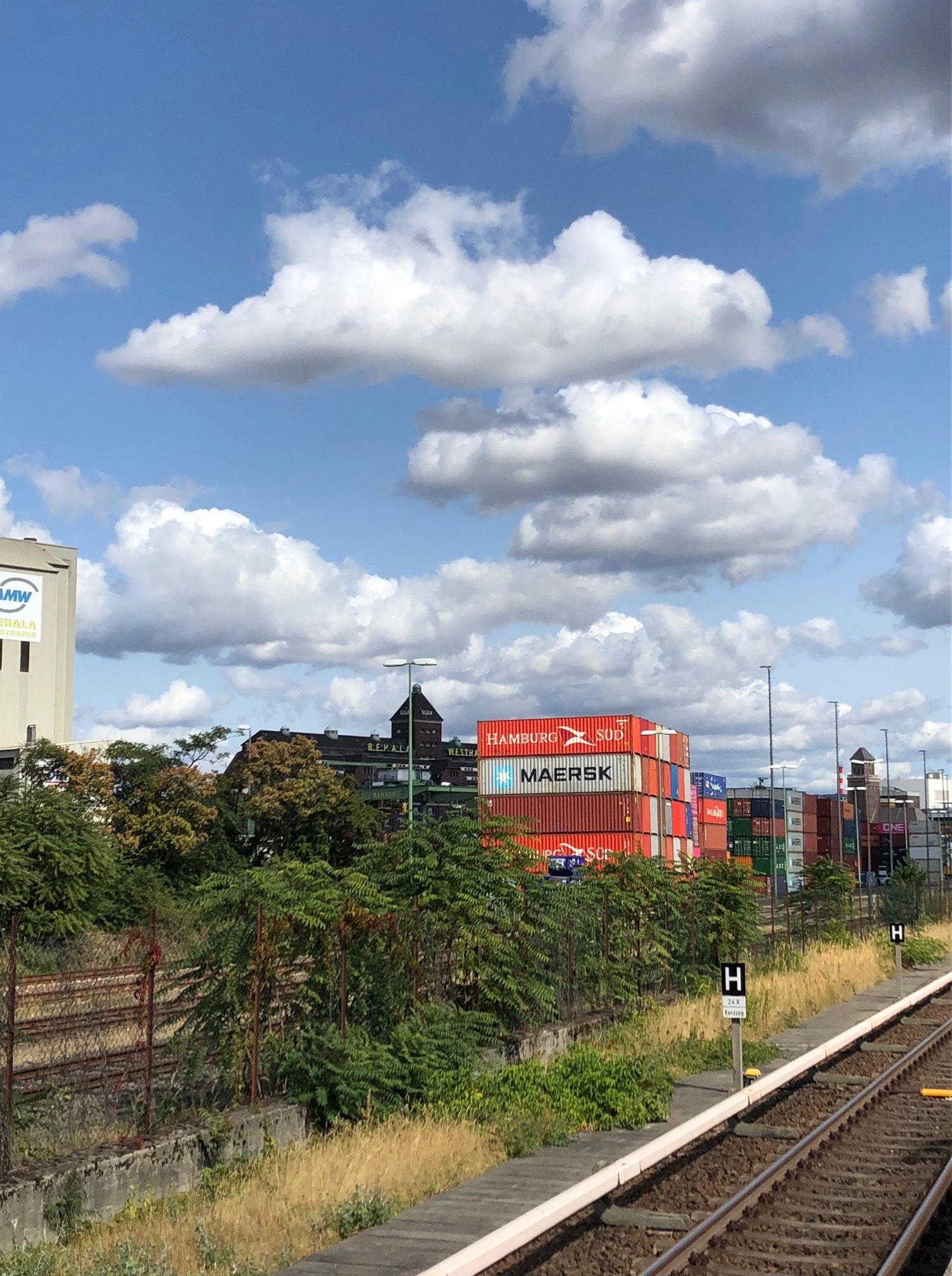
The German Chicago is Very Plain
The last connection between the two cities is more of a happy geographical accident. Both Berlin and Chicago sit in some of the flattest landscapes in their continents. The Chicago River wends down into the Illinois Prairie lands. This vast flat landscape covers over 22 million acres in Illinois alone. Along with the depression of the Great Lakes basin, this is one flat country. In fact, the first French expeditions to visit the area found its landscape terrifying in its endless lack of elevation.
Perhaps they’d have felt some relief if a Prussian had been on the expedition. Berlin sits smack dab in the middle of the European Plain. Mountains dominate European geography around the Mediterranean basin, but Northern Europe is notably flat. One could march from the Southwest of France all the way to Siberia and barely hit a hill. That geographical feature has played havoc on European geo-politics and, incidentally, looks and feels an awful lot like the Midwest.
Maybe That’s Why There Are So Many Germans in Chicago?
Infamously, Mayor “Big Bill” Thompson declared his city to be the “sixth German city of the world” during WWI. That was some very dumb politicking, but still true enough. In the 1890s, when Twain wrote of the German Chicago, roughly 1 in 3 Chicagoans were 1st or 2nd generation German immigrants. One presumes that those volk would have also noticed the startling similarities between Germany and Berlin as they stepped off their steamships and trains. After all, we’re still noticing this uncanny resemblance 125 years later.
– Alex Bean, Content Manager and Tour Guide
ABOUT CHICAGO DETOURS
Chicago Detours is a boutique tour company passionate about connecting people to places and each other through the power of storytelling. We bring curious people to explore, learn and interact with Chicago’s history, architecture and culture through in-person private group tours, content production, and virtual tours.



